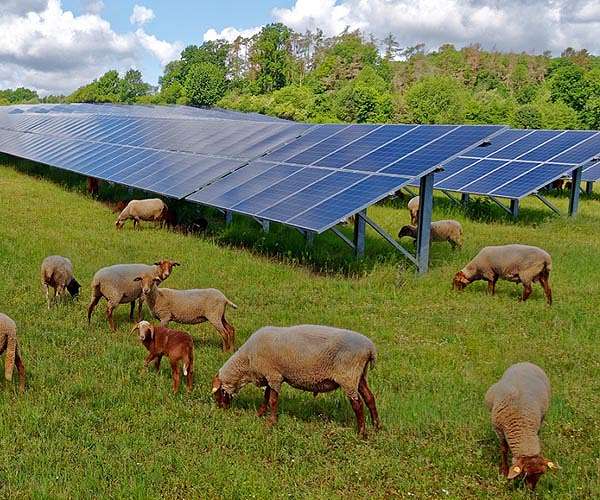Solar energy and agriculture can work together, researchers from Swansea University have shown
Researchers from Swansea University have developed a new tool to help find the best photovoltaic (PV) materials to support both solar energy generation and crop growth.
In a new study published in ‘Solar RRL’, scientists from the Department of Physics investigated how semi-transparent PV materials, used in agrivoltaic energy (where solar panels are combined with agriculture), affect crops. Their research is aimed at optimizing the balance between food production and solar energy generation.
The team introduced a freeware tool that predicts the performance of different PV materials in terms of light transmission, absorption and power generation. This tool, which can analyze materials for different locations around the world, is based on geographical, physical and electrical data.
Austin Kay, lead author of the study and PhD candidate at Swansea University, said: “This technology, which allows us to compare many types of PV material, can help us determine how we balance food production and renewable energy generation.”
A crucial factor in the agricultural voltaics sector is choosing the right PV material, which depends on how the material absorbs different light wavelengths and the band gap. A material’s band gap affects its ability to absorb higher-energy, short-wavelength light (blue) or lower-energy, long-wavelength light (red).
By selecting PV materials based on these properties, researchers can tailor the light passing through semi-transparent PV panels to benefit crops. Crops mainly absorb red and blue light for photosynthesis, while they reflect green light.
Associate Professor Ardalan Armin, the project leader, added: “By optimizing the combination of solar panels and agriculture, agrivoltaic energy has the potential to contribute significantly to the decarbonization of the agricultural sector. This approach not only generates clean energy, but also improves food security. “
Solar panels have a variety of applications in agriculture, such as on the roofs of greenhouses or polytunnels, and can even provide shelter for livestock. Livestock, in turn, can help maintain vegetation around the panels. However, the choice of livestock is important because certain animals, such as goats, can damage the panels by jumping on them.
Research report:On the performance limits of agricultural voltaics: from thermodynamic to geo-meteorological considerations


